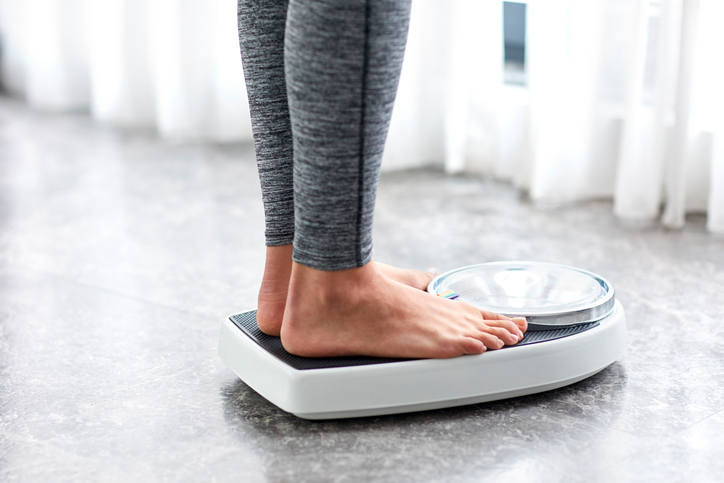From Fat Storing to Fat Burning—Tips to Upgrade Your Metabolism

Want to transform your body from a fat storing mechanism into a fat burning machine? Don’t we all?! There are some “secret” tips and tricks athletes, fitness models, actors, and celebrities have learned to help them stay lean, but they aren’t the only ones who have access to these tools. Now you can use the same concepts to transition into burning body fat for fuel. So you can not only lose weight faster but keep that body fat off for good.
First, let’s start with a few things you’ll want to get rid of, starting with popular beliefs like “breakfast is the most important meal of the day” and “a low-fat diet is the best way to lose weight” as well as “counting your calories is the best way to diet” and, one of our favorites, “eating low-fat, high-sugar ‘diet’ snacks will help you to lose weight.” All of which are actually just popular myths that will get in the way of your fat burning potential.
Many common diets, like those promoting enriched wheat products, prepared diet foods, low-fat desserts, and processed foods, propel your body into fat storing mode. Making it harder for you to lose weight even as you’re working hard (often really hard) to accomplish your goals. Not cool!
Why is this happening, and how do you flip the switch into fat burning mode?
Fat Burning Myths
First, and this is clearly not your fault, these myths have prevailed throughout our culture for many decades. We mentioned a couple prevalent myths above, and here are just a few more:
- Counting and cutting calories leads to permanent weight loss.
- It’s better to eat sugar than fat.
- “Gluten-free” foods are healthy.
- As long as your calories are low, it doesn’t matter what you eat.
- Sugar-free snacks will help you lose weight.
- A diet high in grains and low in fat is best for fat loss.
- You should avoid eating fat if you want to lose weight.
- Artificially sweetened diet drinks are a great way to lose weight.
- A high-protein diet is unhealthy.
- Always opt for fat-free dairy foods.
So, are we saying everything you’ve learned about dieting and fat loss is wrong?
Well…
Let’s just discuss some really good ways to turn things around for you and help you take your body from fat-storing mode to fat-burning mode.

Change Your Eating to a Fat Burning System
The typical American diet involves convenience, three meals a day, revolves around processed foods, and can be extremely unbalanced. So, what do you need to change to tweak your diet for better fat burning?
How you start your day matters.
Have you heard “breakfast is the most important meal of the day” your entire life? If so, you’re not alone. Unfortunately, breakfast has been taken over by cereals and pastries. And unless you’re consuming a large portion of healthy lean protein, coupled with some healthy fats, breakfast is something best avoided if you want to maximize your fat burning potential. When you eat a breakfast high in carbohydrates and simple sugars, you are setting yourself up for cravings and hunger the rest of the day. And, if you’ve been eating sugary “meals” for years, your body may require more and more sugars, starches, and carbs to keep you feeling satisfied and energized.
If you continue to eat simple sugars and carbs in this manner, unfortunately, your levels of leptin (the fat-burning hormone) will begin to drop. When your leptin levels are suppressed, your body turns to storing fat. This is obviously counterproductive to losing body fat. That means continuing to eat sugary foods and simple carbs in combination with a drop in fat-burning hormones can leave you frustrated and gaining more weight with each passing year.
Plus, you’ll constantly be hungry, have cravings, experience energy spikes, and never really feel fully satiated. It’s a vicious merry-go-round that’s best to exit as soon as possible!
What should you do instead?
Start by adding a protein source to your breakfast. In fact, you should ensure each meal you consume has protein in it. Consuming a diet low in simple sugars and high in protein and fats is the best way to switch your body into fat-burning mode. Try adding an adequate portion of protein to each and every meal you eat throughout the day. And, start your day off with a high-protein meal. Even something as simple and easy as a BioTrust Low Carb shake to provide the protein you need to get fueled for the day.
How will starting your day with protein help? You’ll experience less cravings, you’ll feel full and satisfied, and you’ll enjoy a steady flow of energy all day long. Also, since protein requires a lot of energy to digest it, you’ll be burning additional calories as well. Talk about a Win, Win, Win!

Intermittent Fasting Boosts Fat Burning
Next, consider adding some short-term, easy fasting to your lifestyle. How does fasting help change your body from a fat storing machine into a fat burning one? Fasting allows you to use all the energy from the food you’ve eaten. Once it’s been used, your body turns to fat stores for energy.
If you’ve been eating breakfast in the morning forever, you might be asking, “Won’t I starve?” No. You won’t starve. You see, you’ve simply become accustomed to eating breakfast every day, so your body has learned to become hungry and want food first thing in the morning. However, this is just a conditioned response, and it’s something that can be changed over time.
How? Start pushing your first meal forward a bit. If, for example, you normally eat breakfast at 8:00 a.m. every morning, begin by pushing that time to about 8:30 a.m. for a few days. You really won’t notice much difference with small, gradual changes.
Continue delaying your first meal of the day until you are able to delay eating until around noon. Ideally, you’ll limit the time period during which you take in food to a six- to eight-hour window. For example, if you normally eat dinner around 6:00 p.m., then your first meal would be at noon. You would be in fasting mode after your last meal of the day until your first meal the next day at noon. You can, of course, move this feeding window to match the needs of your schedule.

Benefits of Low Glycogen Levels
By increasing the amount of protein you eat, limiting sugars, and harnessing the power of intermittent fasting, you help keep glycogen levels in your system low.
What is glycogen? Let’s start at the beginning. When you eat carbohydrates, your body digests them and breaks them down into a usable form of sugar called glucose. If you don’t use all the glucose for your energy needs, it will be stored in your muscles and liver as glycogen. As long as your liver is filled with glycogen, you will be in fat-storing mode.
Since your goal is to switch to fat burning, it’s essential you empty your liver of glycogen stores, and that’s exactly what intermittent fasting does. When you’re not taking in food, you’re using all the glycogen in your body for energy. Again, once that’s gone, you switch to body fat for fuel. It’s a beautiful thing!

It’s Time to Stop Dieting!
How great does that sound? And it’s true. You can stop calorie-counting and following the next diet trend and turn your body into a fat-burning machine if you employ the few simple tips we shared with you!
Let’s review:
- Eat a high-protein meal as your first meal of the day.
- Make sure every meal contains a portion of quality lean protein.
- Avoid simple sugars and refined and processed foods.
- Push your breakfast up gradually until you are able to fast for a full 16 to 18 hours.
Once you have changed your body from fat storing to fat burning, you’ll notice how much easier it is to control your appetite, lose weight, and keep it off. You’ll also likely enjoy improved health markers like lower blood pressure, controlled blood sugar levels, and less overall inflammation.
Remember, these are not quick fixes or a temporary “diet.” Practice until they become habits and they’re part of your healthy lifestyle to help keep you in fat burning mode—healthy, fit, and energized for life.







